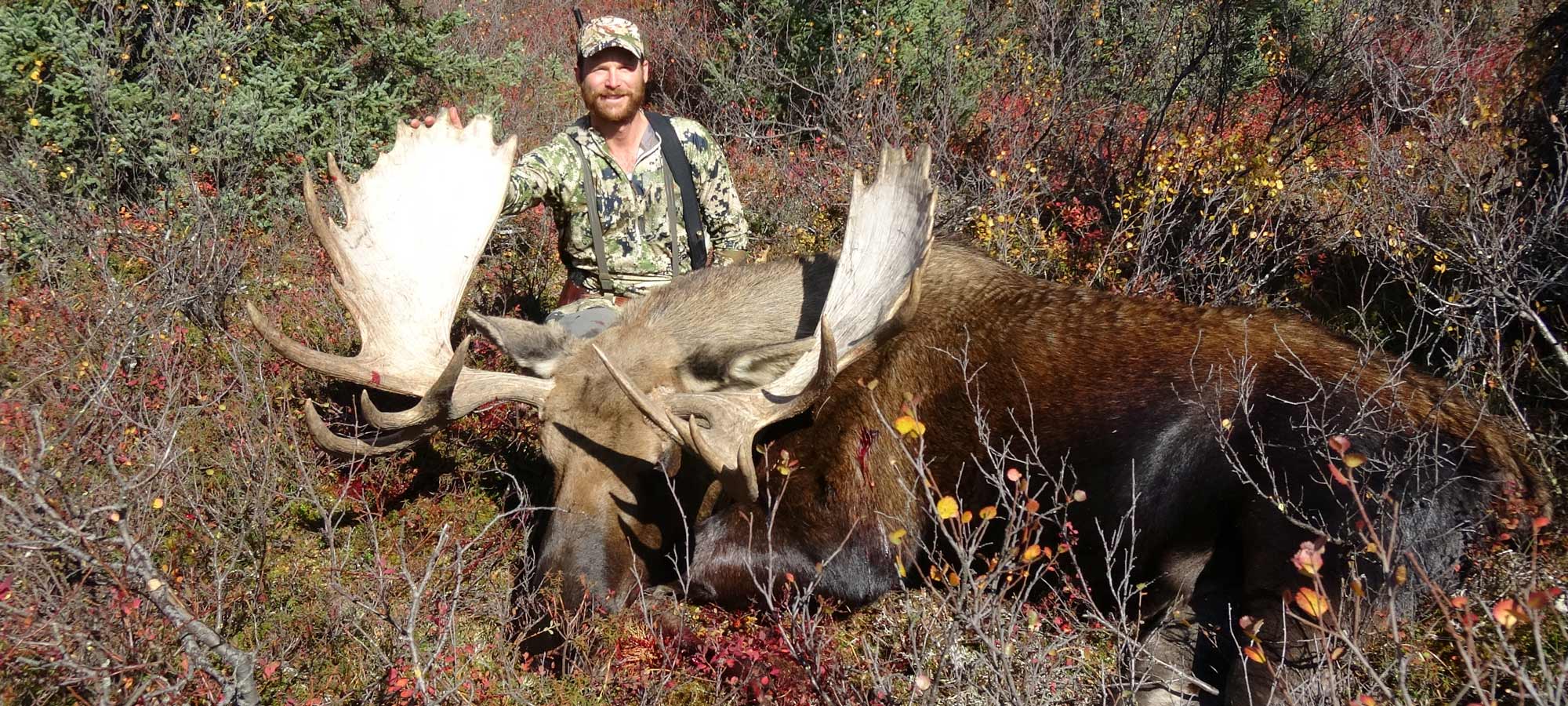We may earn revenue from the products available on this page and participate in affiliate programs. Learn More ›
The massive antlers gave one last shake and lay still. Emotions surged as I approached to run my hands over coarse hair and palmated antlers. Hard days in the Alaskan bush lay behind me, harder ones yet to come. But at this moment, in this place, I was realizing a 20-year dream come true.
I had planned, saved, strategized, and researched for years for this hunt, and several key factors enabled me to pull it off. One of the most important was the gear I used. Alaska is incredible—but it can also be deadly. Good gear will help you weather the weather, be it snow, rain, wind, or shine. It’ll help you sleep at night, keep you oriented, and make meat at the moment of truth. It’ll keep your feet in good hiking shape and your clothes and equipment dry. Here is a list of the gear I used. All of it was good, and some was awesome.

Packraft
To float a river or creek you will need a good raft. It should be capable of carrying you, your gear, and 650 pounds of quartered moose—a total of around 950 pounds. It also needs to be as lightweight as possible, durable as a Sherman tank, and designed for easy inflating and loading. Two rafts met my criteria: I used the new Forager by Alpacka, and my hunting partner Greg used the PR-49 by Pristine Ventures. Both performed admirably; the Forager showing a slight advantage in weight-bearing capacity, while the PR-49 was easier to inflate and had a more user-friendly lashing system. (Note: In placid, deepish water you’ll be able to transport your gear plus a moose. In shallow, volatile water, your gear and half a moose will max out these rafts.)
Paddles
A good recommendation steered us toward Aqua-Bound’s 240-cm carbon Shred. We ground our paddles along gravel bottoms, jammed them against logs and snags when fending them away, and thoroughly abused them over miles of rough water. They were, in a word, awesome.
PFD Life-vest
Any good, comfortable, compact vest will do. Just don’t get cocky and think you don’t need one—you do.
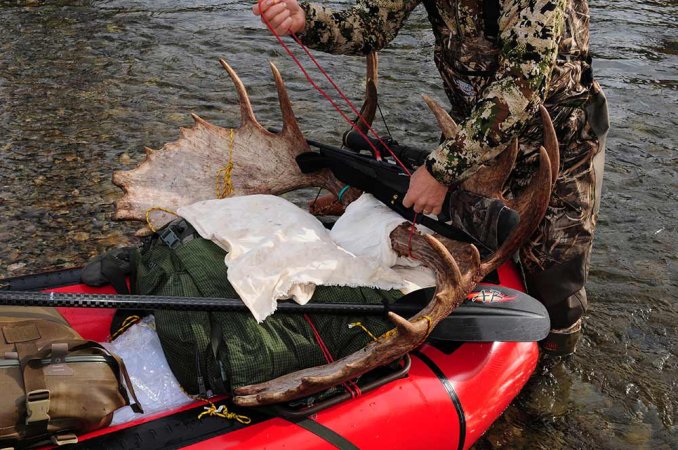
Waders
You may spend as much time in the water as in your raft, alternately dragging, shoving, and lining the raft downstream. Cold water regularly lapped at our waists as we worked our way down the rugged stream, proving that hip boots wouldn’t have been enough. Our breathable Grand Refuge 2.0 Frogg Togg waders handled the abuse with aplomb, making it through ten days of wader hell without a hitch. I’d use them again in a heartbeat.
Boots
When we weren’t wearing waders, we wore Muck Boots’ Fieldcraft II pull-on boots. (On a float trip you want pull-on boots, so changing from boots to waders and back again isn’t too tiresome.) Grunting through miles of wet, loofa-like tundra with 125 pounds of moose meat on your back will make you appreciate good boots, and the Fieldcrafts excel. Inside the boots you should wear good wool socks—my favorite are socks by SmartWool, Danner, and Cabela’s Outfitter line.

Clothing
I’ll admit that I feared the Alaska weather. Anything from warm sunny days to rain, snow, and significant cold can be expected, and you’ll need clothing capable of coping with all extremes. After much deliberation I chose Sitka Gear clothing. From base layer to rain gear, the Sitka clothing was even better than we hoped. If you expect really wet weather (as in wind-driven frog-strangling rain every day) I’d add a lightweight rubber raincoat to wear over your Goretex raingear (I opted for Helly Hansen).
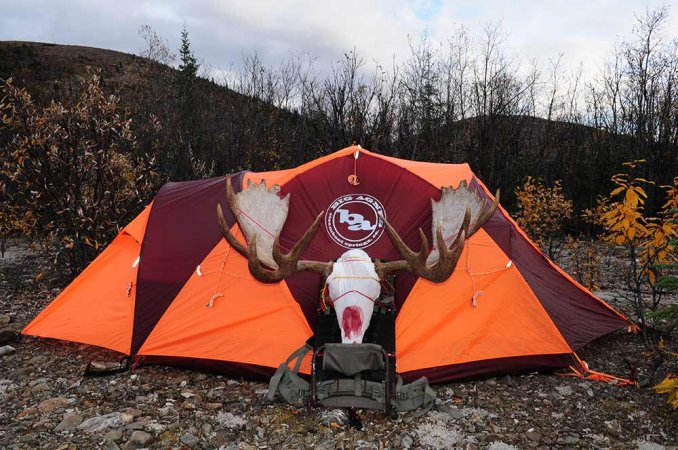
Tent, Sleeping bag, and Pad
Big Agnes was our gear of choice, including their Battle Mountain 3-man tent, insulated Air Core Ultra sleeping pads, and Farwell 0-degree bags. While I would recommend a warmer synthetic bag for your trip, the tent performed admirably and the sleeping pad was positively the most comfortable I’ve ever used.

External Frame backpack
The heaviest loads of a hunter’s life will probably occur during a moose hunt, especially on Alaska’s leave-the-meat-on-the-bone units. I used a Freighter Frame from Barney’s, and Greg used a Cabela’s Outfitter frame to carry my moose 1.5 miles. Get a good pack that fits you, and wear it with weight while hiking/exercising before the hunt.
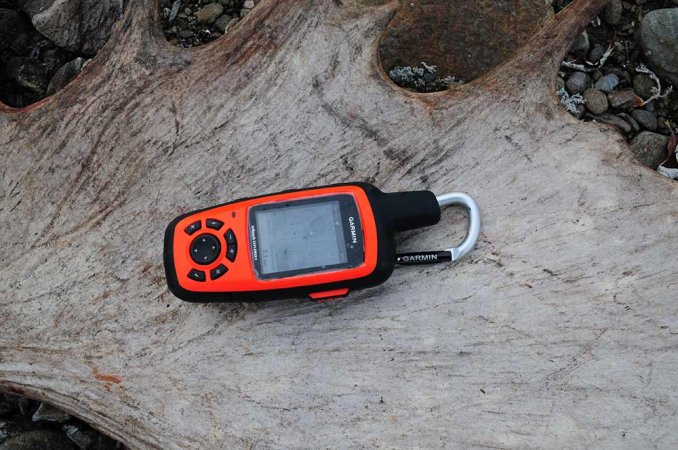
Garmin inReach
Safety is a big concern during a backcountry hunt like this. I wanted a GPS with mapping capabilities for navigation, a means of communication via satellite (cell service is nonexistent in many backcountry settings), and I wanted an SOS-capable unit. The inReach does all three. It also provides weather forecast information—a nice perk that could also end up saving your hide with a heads up about incoming storms.
Maps
Hand-in-hand with GPS and compass, topographical maps offer the big-picture information you need to navigate and hunt effectively. I got my made-to-order waterproof maps from MyTopo.com.
Rifle, Ammo, and Optics
I originally planned to use my Montana X2 with its Proof Research barrel, but that rifle fell victim to a gunsmithing accident just prior to departure. My TC Venture in .300 Win. Mag. was excited to fill in. I topped it with a Leupold VX6 3-18×44 riflescope, fed it its favorite Hornady 200 gr. ELD-X Precision Hunter ammo, all quarterbacked by the new Vortex Fury HD binocular/rangefinder. The setup was capable to four-digit distance, but thankfully I was able to hunt my way inside of 40 yards. The performance was outstanding.
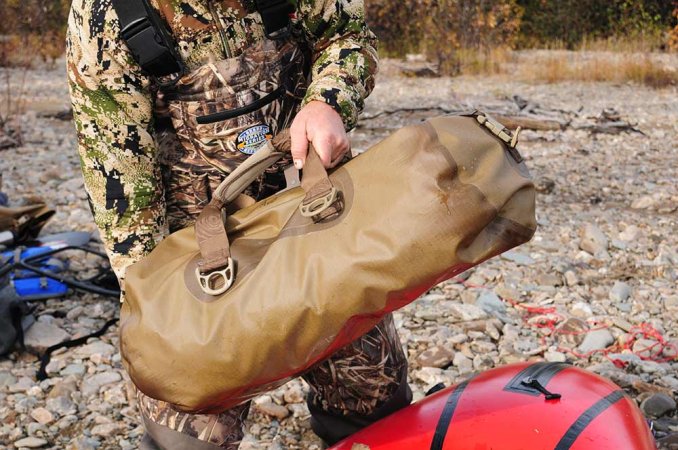
Dry Bags
On an Alaskan moose float hunt, everything gets wet. Always. We used WaterShed dry bags to defend against that law. Clothes, bedding, food, camera gear—it all stayed completely dry. Get some.
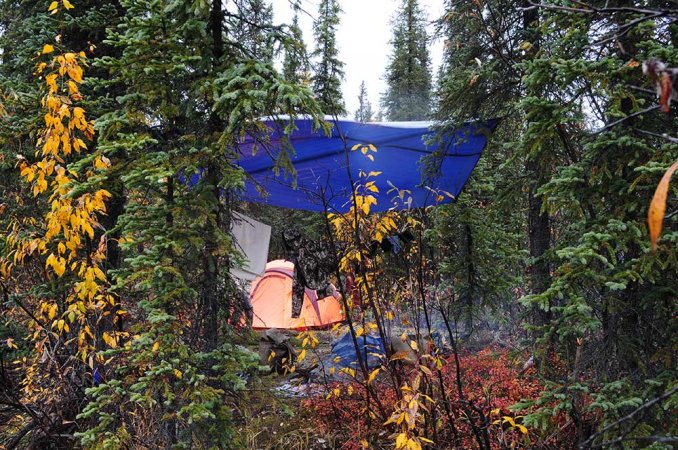
Tarp
A simple 12×14 tarp pitched into a lean-to or diamond-fly shelter will keep wind and rain off of gear, meat, and tired hunters. Don’t leave home without one.

Paracord
I took 200 feet and used all of it for pitching tarps, lashing loads to pack or raft, and such. Indispensable.

Meat Sacks
I almost overlooked this one during my own pre-hunt planning. Pricey but worth it in the wet, grimy environment of an interior Alaska float hunt, the T.A.G Bag set of 6 from Pristine Ventures is the way to go.
Saw
We used a folding Wyoming saw with good results. It was invaluable when cutting sweepers (trees that lean dangerously over, “sweeping” the water) out of the path of our rafts.
Miscellaneous Gear
Everything else – knives, headlamps, fire kit, etc.—can be pulled from your regular go-to hunting gear. Just make sure they’re weatherproof or packed for the weather.
Wisdom
The last advice given by my Alaskan friend as he dropped me off was “Think before every move.” It’s good advice. Knowledge and wisdom can’t be bought – they have to be earned. Work and research hard to earn all you can before embarking on your dream DIY hunt. It could make the difference between life and death.

